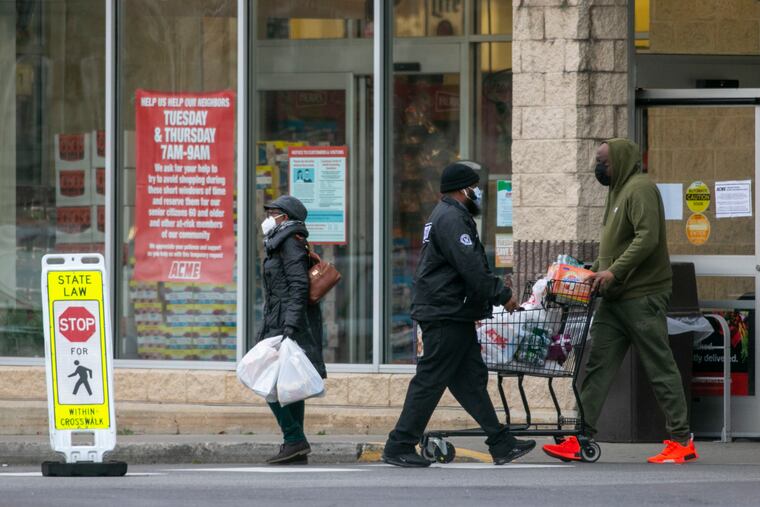Front-line essential workers and adults over 75 should be next to get vaccines, CDC panel says
Grocery store workers, teachers, day-care staffers and others on the front lines of America’s workforce should be next to get the COVID-19 vaccine, along with adults over 75, a federal panel said.

WASHINGTON - Grocery store workers, teachers, day-care staffers and other people on the front lines of America’s workforce should be next to get coronavirus vaccine, along with adults over 75, a federal advisory panel said Sunday.
The recommendations, which come two days after regulators authorized a second coronavirus vaccine, will guide state authorities in deciding who should have priority to receive limited doses of vaccines made by Pfizer-BioNTech and Moderna.
The groups designated Sunday total about 49 million people and were deemed the next highest priority by the expert advisory panel to the Centers for Disease Control and Prevention because the vaccine remains in short supply.
An estimated 30 million front-line essential workers labor in meat plants, grocery stores, prisons, public transit and other key areas, and cannot work remotely. They are a priority because they play a critical role in keeping society functioning, and they live or work in high-risk, high-transmission communities.
Adults 75 and older - about 19 million people - were also included in this priority group because they account for 25% of hospitalizations and a significant share of deaths from covid-19, the illness caused by the novel coronavirus.
The Advisory Committee on Immunization Practices voted 13 to 1 to recommend these workers and older adults be prioritized in what is known as Phase 1b.
» READ MORE: All your COVID-19 vaccine questions, answered
Their vote also covered an even larger group of people who will become the third priority group in weeks to come. That larger group of 129 million people - part of Phase 1c - is made up of a second tier of essential workers, adults 65 to 74 and adults 16 to 64 with high risk medical conditions. (Overlapping populations are excluded.)
The subsequent tier of essential workers is made up of 10 broad areas, including finance, information technology, food service, energy and transportation and logistics.
Advisory group members made clear that the broad outlines will give states flexibility to make priority decisions locally.
"These are going to be imperfect," said Grace Lee, a committee member and professor of pediatrics at Stanford University's medical school, referring to the industries listed in the two groups of essential workers.
The 14 members of the panel have been wrestling with questions about balancing fairness and speed since the spring. They have held nearly a dozen public meetings to examine evidence to address how best to balance saving the lives of the most vulnerable against stopping the spread of the virus, and doing so in a way that will lessen health inequities.